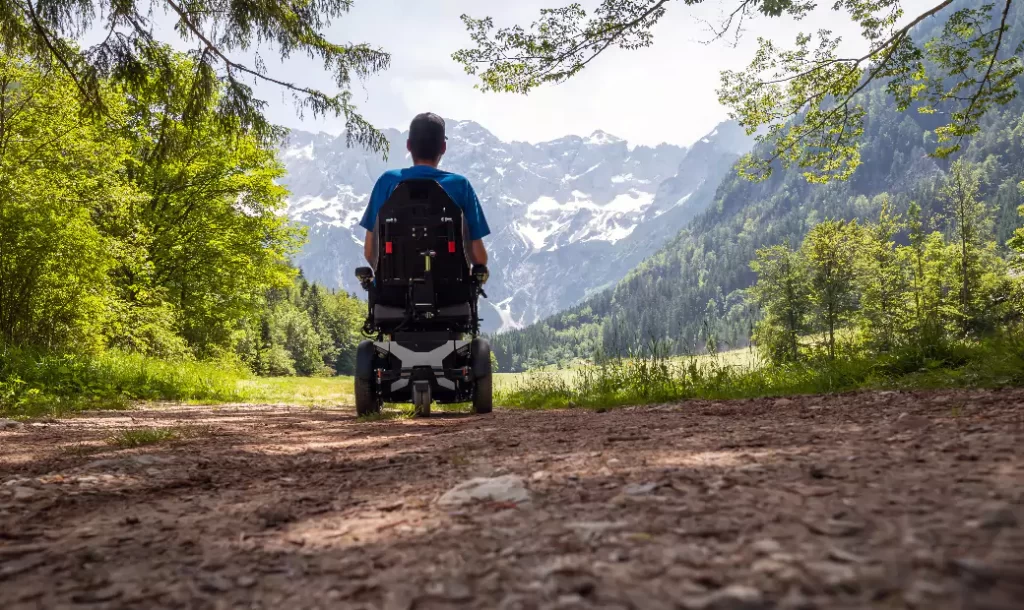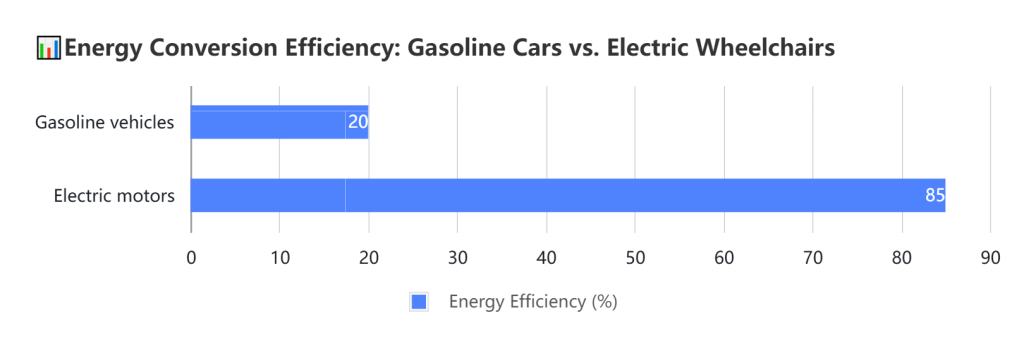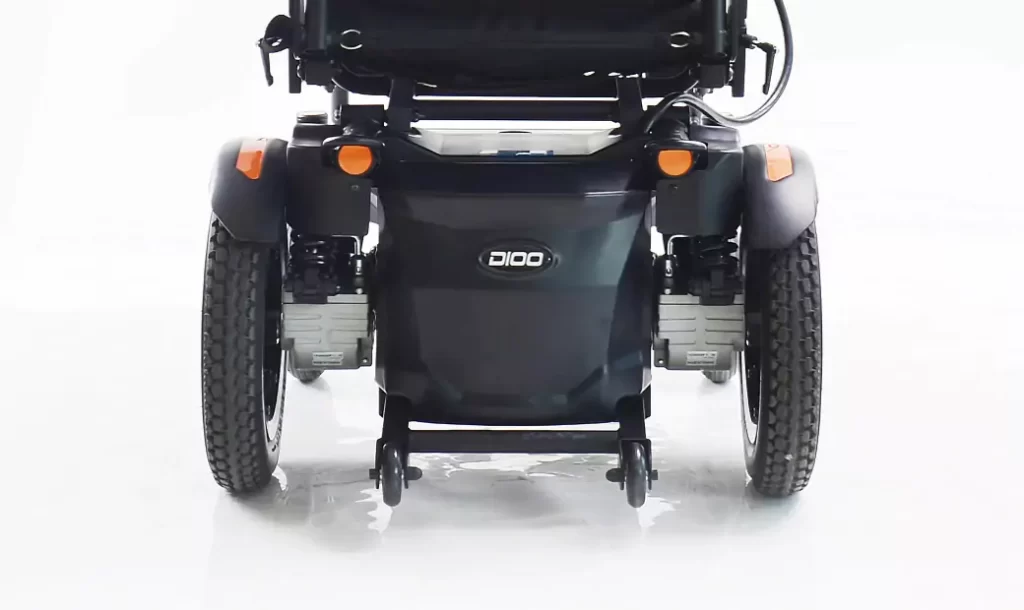Contact Us
The Environmental and Economic Benefits of Electric Wheelchairs
2025-06-27
Introduction
As the global population ages and urban centers become more congested, sustainable mobility solutions have never been more important. Among these, electric wheelchairs have emerged not only as an essential tool for enhanced mobility but also as a surprisingly effective solution for environmental conservation and cost efficiency.
Unlike conventional vehicles, electric wheelchairs produce zero emissions, require far less energy to operate, and significantly reduce maintenance burdens. With the rise of advanced models—such as those developed by INTCO Medical—the case for choosing electric-powered mobility becomes even more compelling.

Zero-Emission Transportation
According to the International Energy Agency (IEA), the transport sector is responsible for 24% of global energy-related CO₂ emissions. Every gasoline-powered vehicle on the road adds to the planet’s carbon footprint. While electric cars are often cited as the future of clean transportation, electric wheelchairs offer an even more direct path to zero-emission mobility—especially for short-distance urban travel. (Source: IEA Global Emissions Report)
Electric wheelchairs produce no direct emissions during operation, making them a low-carbon solution for personal mobility.
This feature is especially important in densely populated cities where air pollution levels are already dangerously high. For individuals who rely on mobility aids, choosing an electric wheelchair is not just a practical decision—it’s an environmental one.
Superior Energy Efficiency
The U.S. Department of Energy (DOE) highlights a striking difference in energy conversion:
-
Gasoline vehicles convert only 17–21% of the fuel’s energy into wheel power.
-
Electric motors, including those in electric wheelchairs, can reach over 85% efficiency. (Source: DOE Vehicle Technologies Office)

That’s a 4–5 times improvement in how energy is used—directly translating into less waste and a smaller environmental footprint.
This efficiency becomes especially meaningful in everyday usage. A person using a power wheelchair consumes far less energy per kilometer than even a small gasoline scooter.
Traffic Decongestion in Urban Areas
Beyond emissions and energy usage, electric wheelchairs contribute to reducing traffic congestion. A study from the World Health Organization (WHO) suggests that personal electric mobility devices like wheelchairs, scooters, and e-bikes can ease urban traffic by occupying less road space and enabling smoother pedestrian integration.
By taking up less space and operating at pedestrian speeds, electric wheelchairs free up vehicle lanes and promote safer, shared mobility ecosystems.
This is especially useful in countries with aging populations, where more seniors are adopting electric wheelchairs for neighborhood errands or park visits.
Cost-Saving Strategies with Electric Wheelchairs
Environmental benefits are only half the story. Electric wheelchairs also provide considerable financial advantages, especially when compared with traditional fuel-powered mobility solutions.
Lower Energy Costs
The U.S. Energy Information Administration (EIA) reports that operating costs for electric mobility devices are only 25–30% of what it costs to run conventional vehicles. This difference is due to:
-
Lower energy prices per kilometer
-
Fewer moving parts in electric drive systems
-
Minimal need for consumables (e.g., engine oil, filters)
For wheelchair users, this translates to hundreds of dollars in annual savings, particularly for individuals who rely on their device daily.
Reduced Maintenance
According to BloombergNEF (BNEF), maintenance costs for electric vehicles are 35–50% lower than for internal combustion engines.
Electric wheelchairs benefit from:
-
Fewer mechanical components
-
No engine or transmission system
-
Lower likelihood of breakdowns
Fewer breakdowns = fewer trips to the repair shop.
Battery Care for Long-Term Performance
Electric wheelchair owners can maximize the lifespan of their lithium batteries by following these simple practices:
-
🔋 Maintain charge between 20–80%
-
❄️ Avoid extreme heat or cold
-
🔄 Perform periodic balance charging
Proper care can extend battery life by 3–5 years, significantly reducing waste and replacement costs.
This maintenance discipline also helps reduce the environmental impact associated with battery disposal and new lithium mining.

Case in Point: INTCO Medical’s Power Wheelchair Innovation
INTCO Medical, a leading manufacturer of rehabilitation equipment, has developed a range of power wheelchairs that embody both environmental responsibility and user comfort.
Their latest models feature:
-
High-efficiency brushless motors
-
Rechargeable lithium battery systems
-
Smart energy-saving driving modes
-
Lightweight frames for reduced material use
By integrating advanced engineering with sustainability goals, INTCO Medical ensures that their electric wheelchairs are not only dependable and comfortable, but also eco-conscious choices for modern users.
For individuals seeking mobility with minimal environmental impact, INTCO’s power wheelchair lineup offers an excellent solution.
Conclusion: Empowering Users, Protecting the Planet
From cutting down emissions to reducing maintenance bills, electric wheelchairs offer a sustainable, economical, and user-friendly solution to personal mobility. They represent a win-win—better quality of life for users and a healthier planet for all.
Whether for daily commutes, recreational outings, or general independence, switching to an electric wheelchair—especially advanced models from INTCO Medical—can be a meaningful step toward a more sustainable lifestyle.
References
-
International Energy Agency (IEA). (2023). Transport and CO₂ Emissions. https://www.iea.org/reports/tracking-transport
-
U.S. Department of Energy (DOE). (2023). Vehicle Technologies Office Data Book. https://www.energy.gov/eere/vehicles
-
World Health Organization (WHO). (2022). Urban Mobility and Health. https://www.who.int
-
U.S. Energy Information Administration (EIA). (2023). Electric vs Gas Vehicle Operating Costs. https://www.eia.gov
-
BloombergNEF. (2023). EV Research Reports. https://about.bnef.com/insights/clean-transport/electric-vehicle-outlook


